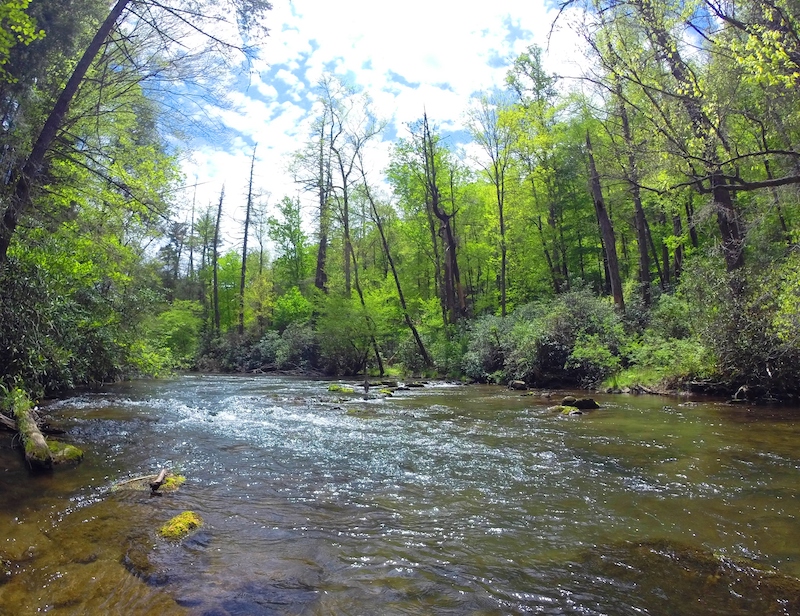You can have the best gear and be a great caster, but it won’t mean a thing if you don’t know where to find feeding fish. We’ve covered a lot of these things separately in other articles, but here is a quick breakdown of the four things you really want to look for before you make that first cast.
Water temperature
A wild trout’s water temperature range for feeding is typically between 50 – 67 degrees. Ideal temperature is upper 50’s to low 60’s. There are plenty of exceptions that you can read about in Understanding Water Temperature, but this is a pretty good rule of thumb and should be your first consideration when trying to locate feeding trout.

If you’re not already familiar with a particular stream’s seasonal variations and trends, a stream thermometer will be your most useful tool. Submerge it for a minute in water that’s about 1-2 feet deep. If, for instance, it’s July and you get a reading of 68-degrees, you should, at the very least, seek out shadier parts of the stream. Ideally, you should try to get to a higher elevation where it’s a little cooler. If it’s March and you get a reading of 47-degrees, seek out sunnier places and, if possible, move to a lower elevation.
Part of this may require a little research on your part as well. If you’re fishing in a low elevation stream where the water temperature stays above 70-degrees for much of the year, there likely won’t be trout in there at all, even during colder months. Again, this is for wild trout. Some streams that might be too warm to support wild trout year round, could be stocked with trout during the colder months.
Depth
Once you have located an area with a suitable water temperature, you need to look for deeper water. We’re not talking about water that has to be over your head, but something at least a foot or two deep. In times when food is incredibly abundant like a heavy hatch, trout will sometimes feed in shallower water. But in general, they will choose water with a little more depth for more protection from predators.
Current
Even if you have ideal water temperature and adequate depth, trout don’t do a lot of feeding in still pools. And even when they do, they can be very difficult to locate and catch because they’re often cruising and feeding sporadically. A defined current is essentially a conveyor belt of food. Most feeding trout will be near currents, watching and waiting for food to come to them.

In currents with a slow to medium speed, trout will likely hold right in the middle of the current and on the edges. Hard currents with a lot of speed are a little different. A trout won’t hold in the middle of a hard current because it requires too much energy. Instead, the trout will be on the edges of these currents or between currents in seams and pockets.
Structure
A trout often has a few places in an area where he likes to hang out. He may have a favorite spot to feed and a spot under a rock where he likes to hide when he senses danger. Sometimes, you’ll find a place that looks perfect as far as depth and current speed go, but the stream bottom may be nothing but flat bedrock. These areas usually don’t hold many fish because there are few, if any, safe places. Try to look for a bottom with a lot of rocks where fish can hide.
Significant structure like fallen trees or large boulders often attracts the bigger fish, particularly if that spot meets all of the other criteria mentioned above. If you find any of the characteristics mentioned above, you’re apt to find a few feeding trout. When you locate a spot with ALL of these characteristics, you’ll likely find the most and/or the biggest trout.

